Could this desire be one factor among many that has consciously or unconsciously influenced the inequitable division of Community College educational resources between the east and west sides of the County?

Editor, Robert Oliphant
Opinion. Finally, by the fall of 2023, Yavapai Community College will begin to look more like a four-year College. For some west County residents, the fight to turn the Community College in this direction has taken a quarter of a century. There are those on the east side of the County who suspect that influential west side community members, who sought to alter the fundamental character of the Community College by making it a four-year institution, may have been a conscious or unconscious force that drove administrators living there to consistently locate major development on the west side of the County to the detriment of the east side.
It is clear that as far back as 1996-97 the Community College administrators felt the Institution development had reached a point where it could become essentially a four-year institution. Here is what research shows so far.
West Region Arizona state Senator Carol Springer met with the Arizona Board of Regents in January 1997 where she outlined her legislative proposal to change Yavapai Community College into a four-year school. She explained that under her proposed bill, upper-division courses and baccalaureate degree programs could be offered at Yavapai Community College in partnership with Northern Arizona University.
The bill being proposed at the time would remove language from a state statute that prohibits community colleges from offering academic programs “beyond two years after the twelfth grade.” It would allow the Community College to offer upper division courses, provide the College a state general fund appropriation of $940,000 in 1998 for those programs, and authorize the College to reimburse NAU for upper division courses taught at the Community College by NAU faculty members. The program would be jointly managed by the presidents of NAU and Yavapai Community College.
The Arizona Legislature’s Committee on Education met in March 1997 to discuss Yavapai Community College’s proposal. The University of Arizona’s lobbyist voiced concern that the state may unintentionally create a new level of colleges with new costs without understanding the true needs of the students in the state.
Lattie Coor, President, Arizona State University (ASU), testified in opposition to the bill. He urged members not to pass the portion of the legislation that lifts the cap on community college instruction, because, he said, the consequences are unpredictable. He stated that he strongly endorsed an appropriation to nurture the NAU/Yavapai partnership and the creation of a study committee.
Northern Arizona University (NAU) also opposed the bill saying that the legislation departed from the original purpose, which was to assist NAU and Yavapai in innovations. The University of Phoenix opposed the bill.
Doreen Daily, President, Yavapai Community College, testified in support of the bill, SB 1109. She explained that community colleges mainly work with the older adult student population, and the main focus is on coordinating with employers to ensure that the curriculum is relevant to the workplace. She said that while the higher-education system was well designed, Arizona is facing an explosion of student needs and must move forward and consider new alternatives.
The measure passed out of this Committee with an amendment that retained the NAU/Yavapai Community College partnership, but created a study committee in place of establishing a four-year degree at community colleges.
The proposal either eventually died or was rejected by the study committee. Since then, some West Region interests have continued to encourage altering Yavapai Community College so it can offer four-year degrees. It finally has its chance.
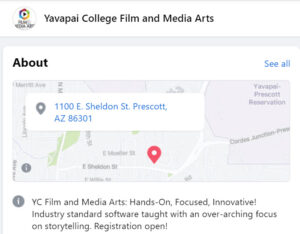 The plans to shutter the Sedona Center completely were thwarted by local Sedona politicians and residents throughout the Verde Valley. However, the College refused to return the film school to Sedona.
The plans to shutter the Sedona Center completely were thwarted by local Sedona politicians and residents throughout the Verde Valley. However, the College refused to return the film school to Sedona.  For example, the Arizona Republic reported December 1, 2020 in an article by Rachel Leingang that “enrollment plumets at Maricopa Community Colleges for fall semester” and was down 14.5% in fall 2021 compared to fall 2020. In another article in the Arizona Republic on February 19, 2022, Ms. Leingang reported that “overall enrollment [at Maricopa Community Colleges] at the start of this spring [2022] semester was 23% below spring 2020 and 11% below spring 2021.” She also reported that Maricopa County Community Colleges District “is teetering on the edge of a fiscal cliff as enrollment continues to drop.”
For example, the Arizona Republic reported December 1, 2020 in an article by Rachel Leingang that “enrollment plumets at Maricopa Community Colleges for fall semester” and was down 14.5% in fall 2021 compared to fall 2020. In another article in the Arizona Republic on February 19, 2022, Ms. Leingang reported that “overall enrollment [at Maricopa Community Colleges] at the start of this spring [2022] semester was 23% below spring 2020 and 11% below spring 2021.” She also reported that Maricopa County Community Colleges District “is teetering on the edge of a fiscal cliff as enrollment continues to drop.”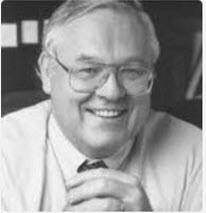
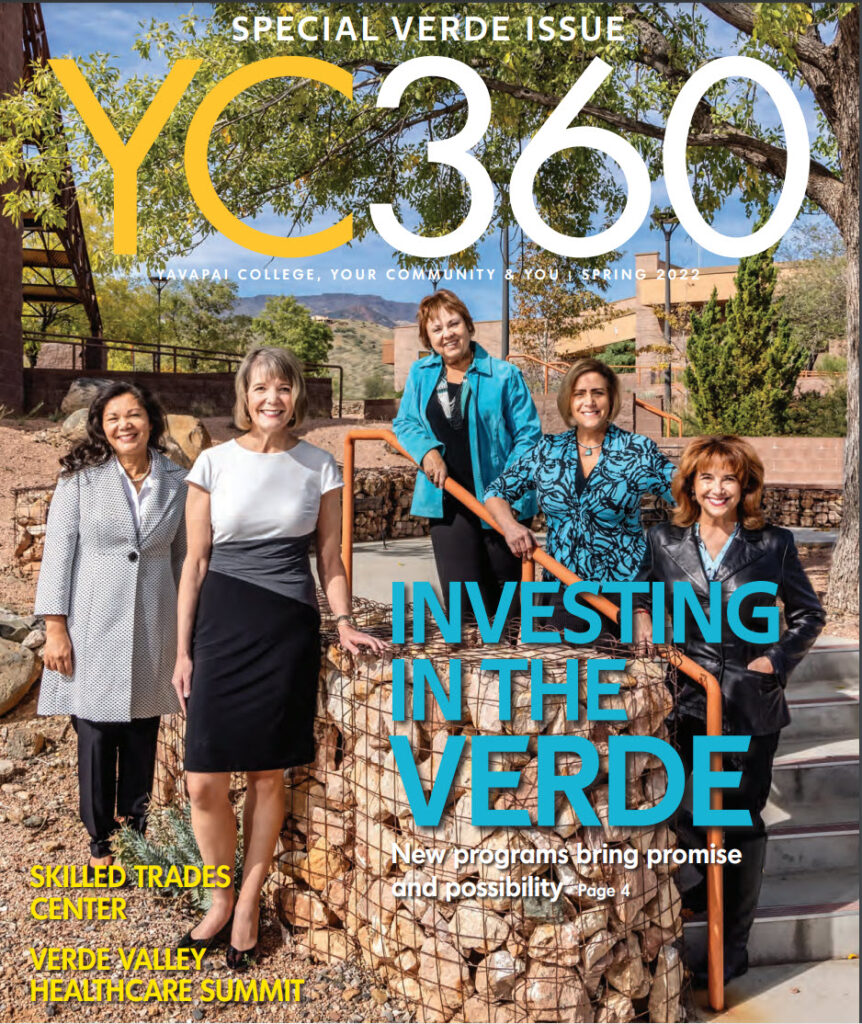
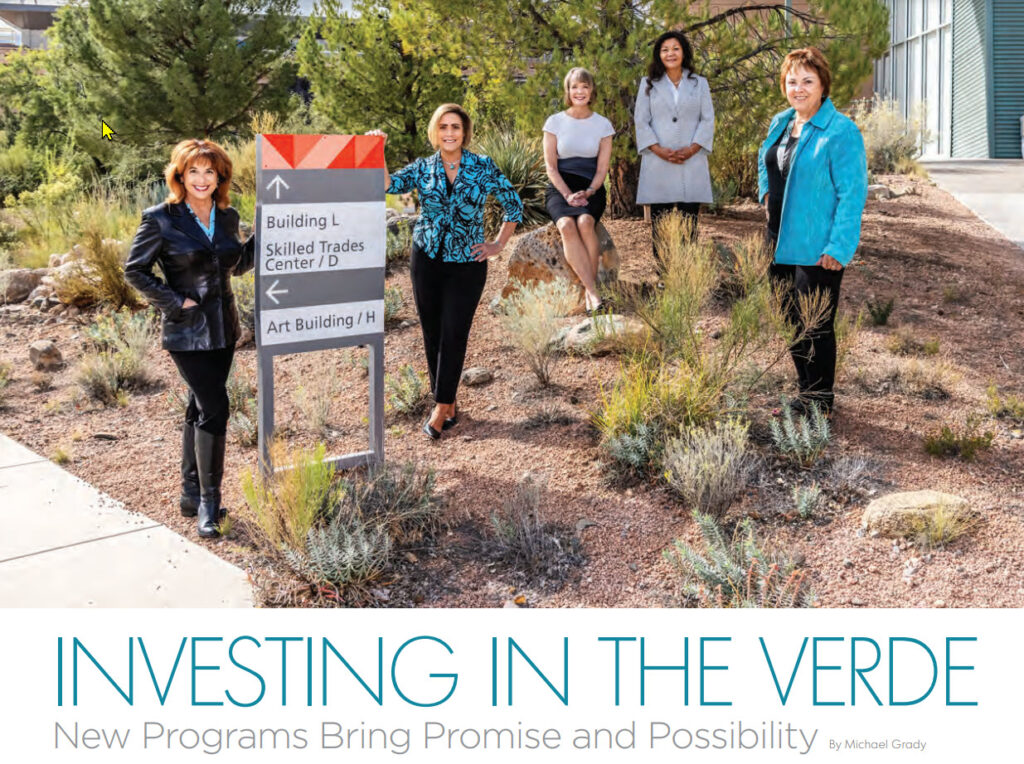
 Yavapai Community College held its second Master Plan public forum on the east side of the County November 14 on the Verde Campus in a one-hour afternoon session. The purpose was to share information about the progress of the Smithgroup’s efforts to generate an eight-year development plan for the entire District. And to gather additional public input about the plan.
Yavapai Community College held its second Master Plan public forum on the east side of the County November 14 on the Verde Campus in a one-hour afternoon session. The purpose was to share information about the progress of the Smithgroup’s efforts to generate an eight-year development plan for the entire District. And to gather additional public input about the plan.
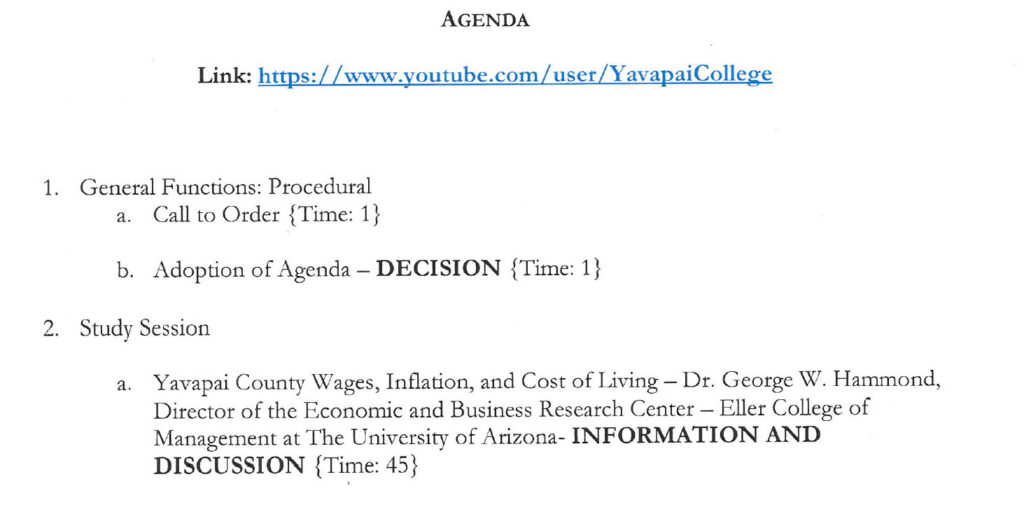
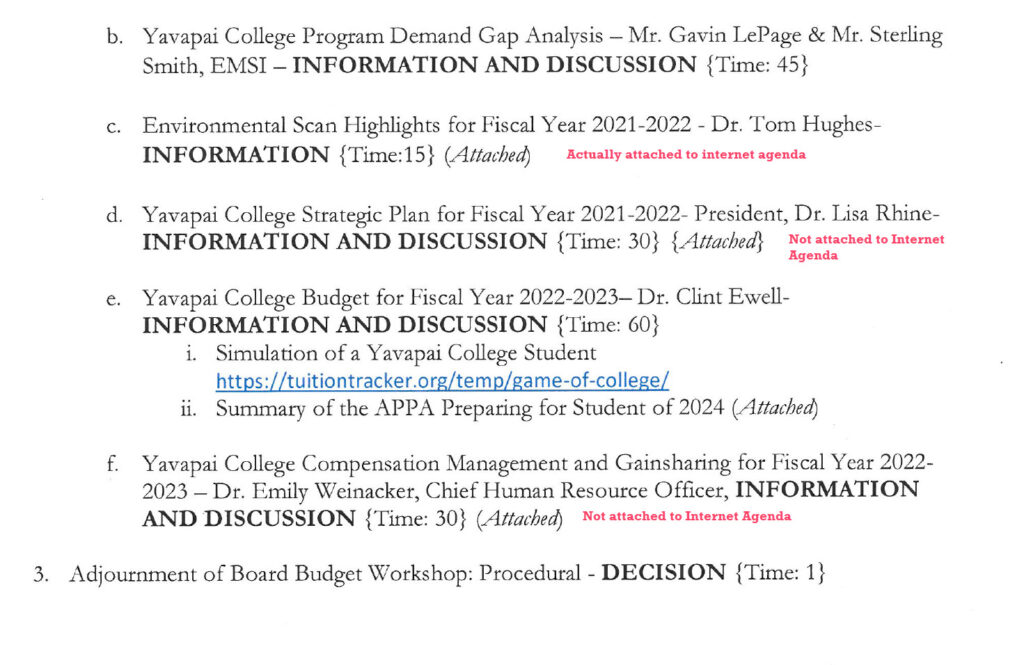
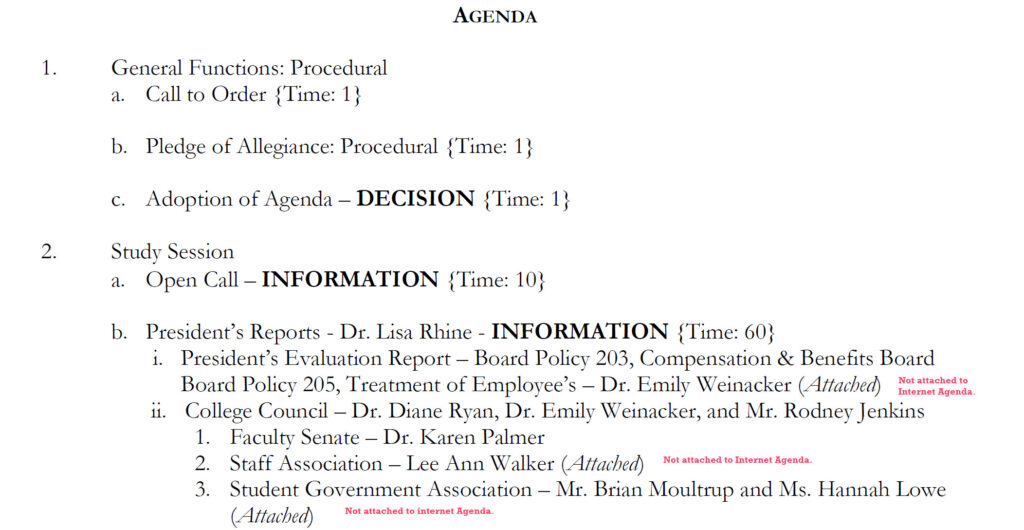
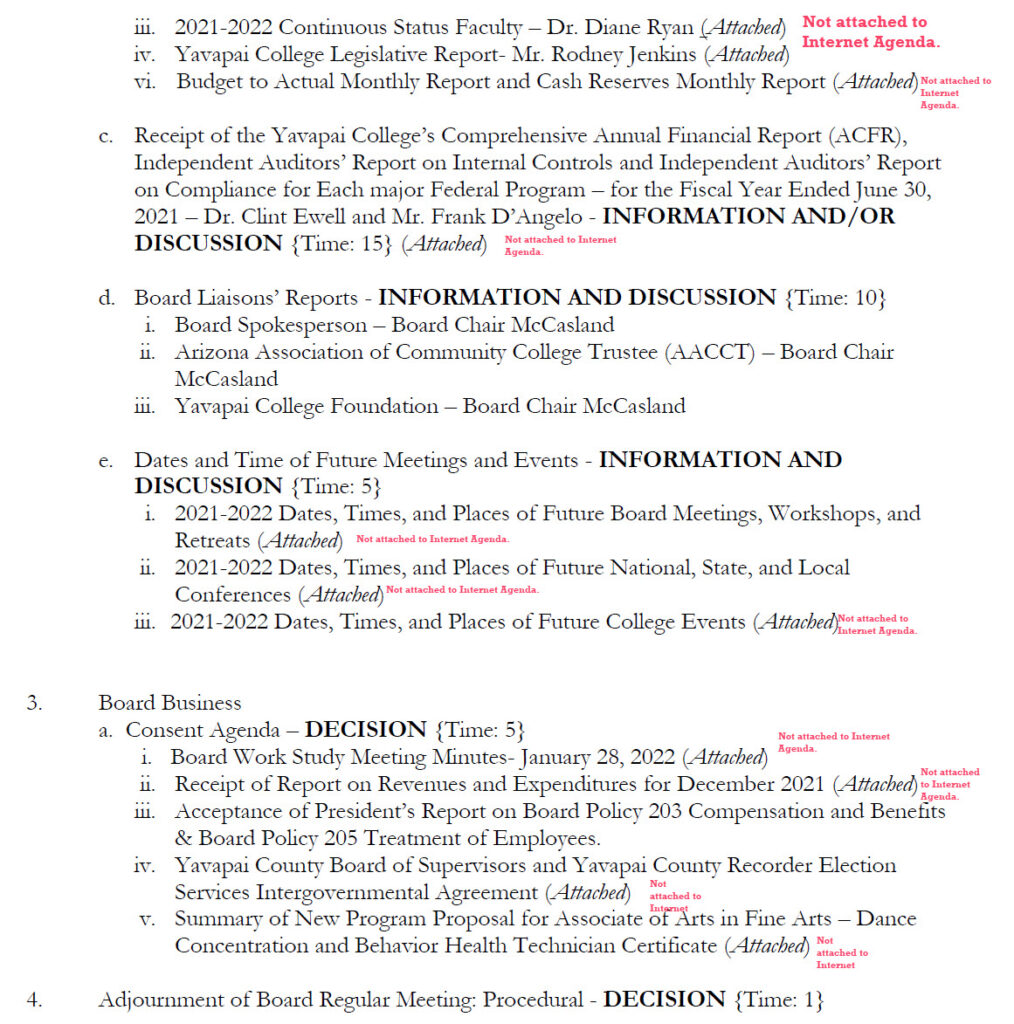
 Third District Community College Representative Paul Chevalier was chastised during the Board’s January Workshop by the Chair of the Yavapai Community College District Governing Board, Deb McCasland, for a remark he made during the first Community College public forum that focused on the College’s future development plan. That forum was held on the Clarkdale Campus in December. The new plan when finally announced will guide capital development in the District for the next eight to 10 years. In December Mr. Chevalier remarked during the public discussion portion of the Forum that the College was “not doing anything for Camp Verde” This upset Governing Board Chair Deb McCasland.
Third District Community College Representative Paul Chevalier was chastised during the Board’s January Workshop by the Chair of the Yavapai Community College District Governing Board, Deb McCasland, for a remark he made during the first Community College public forum that focused on the College’s future development plan. That forum was held on the Clarkdale Campus in December. The new plan when finally announced will guide capital development in the District for the next eight to 10 years. In December Mr. Chevalier remarked during the public discussion portion of the Forum that the College was “not doing anything for Camp Verde” This upset Governing Board Chair Deb McCasland. The Community College press release about this event follows below:
The Community College press release about this event follows below: